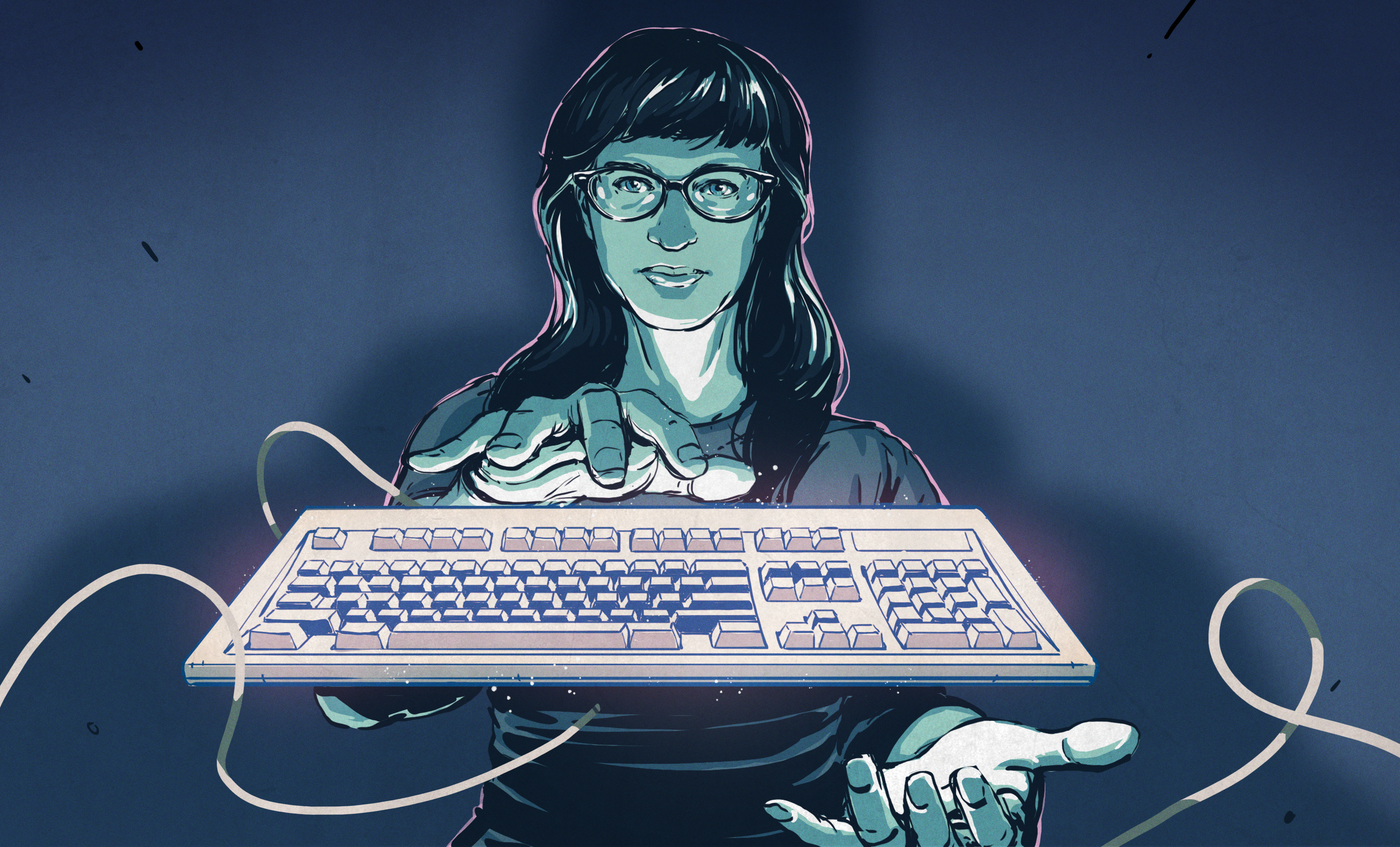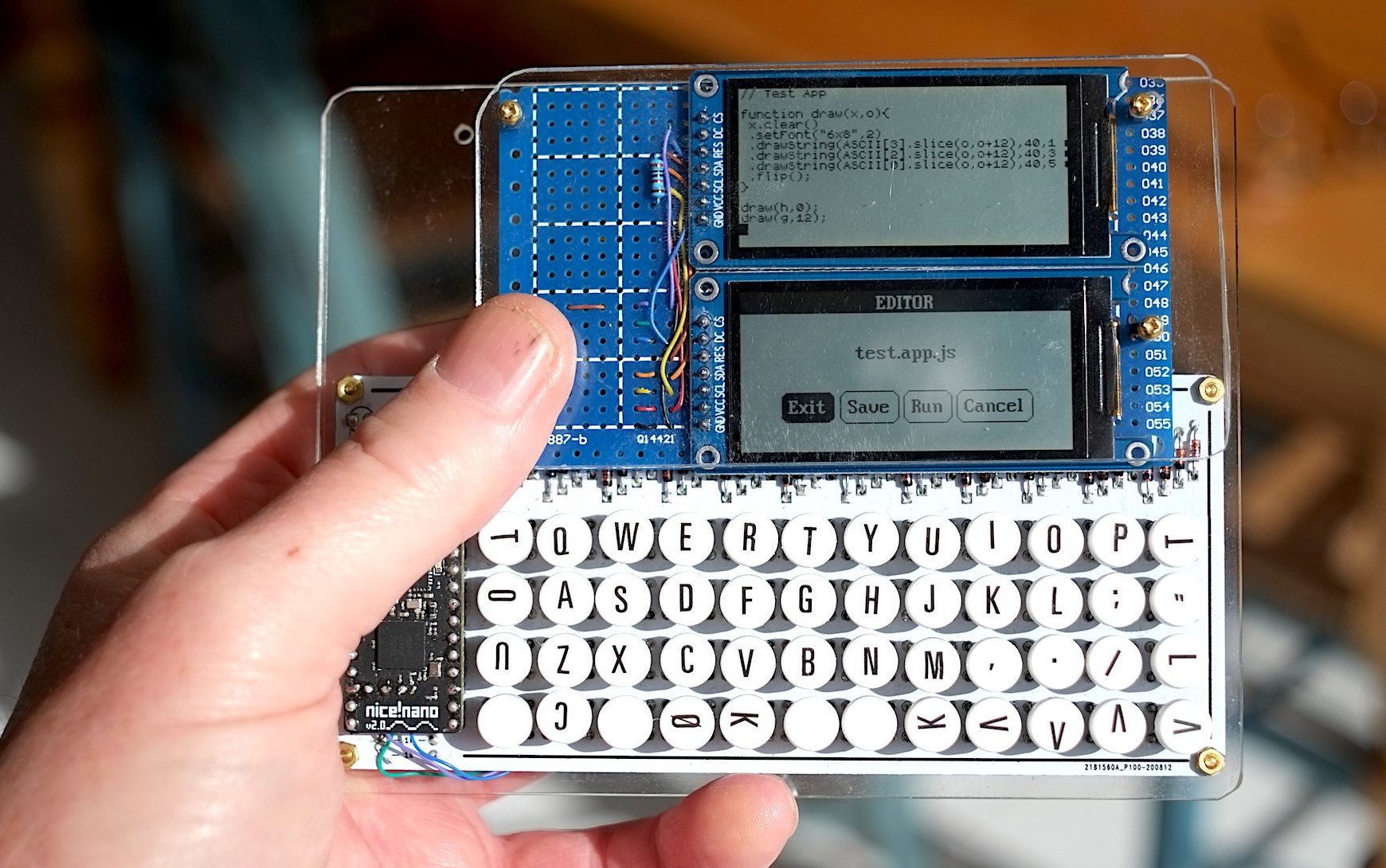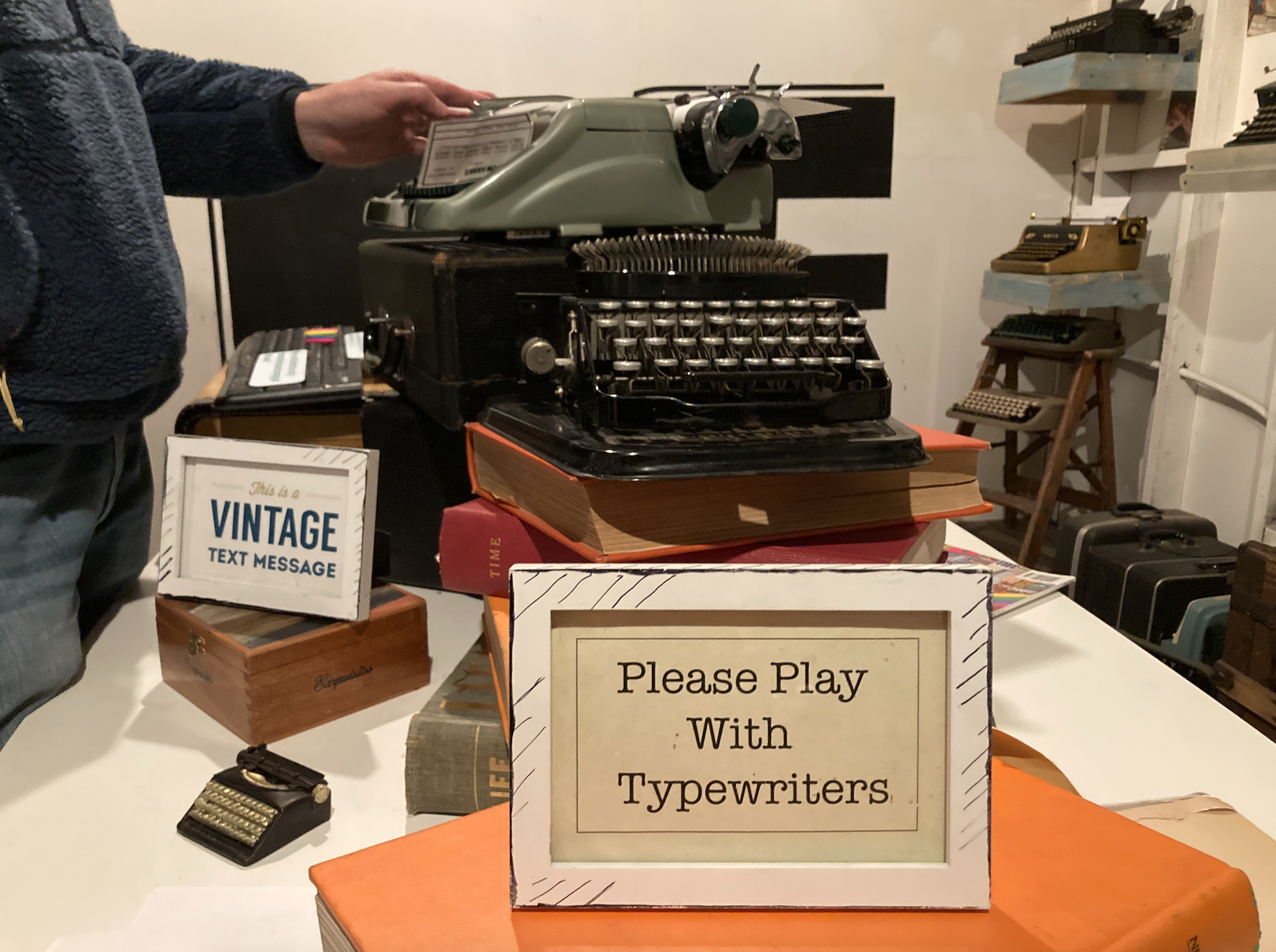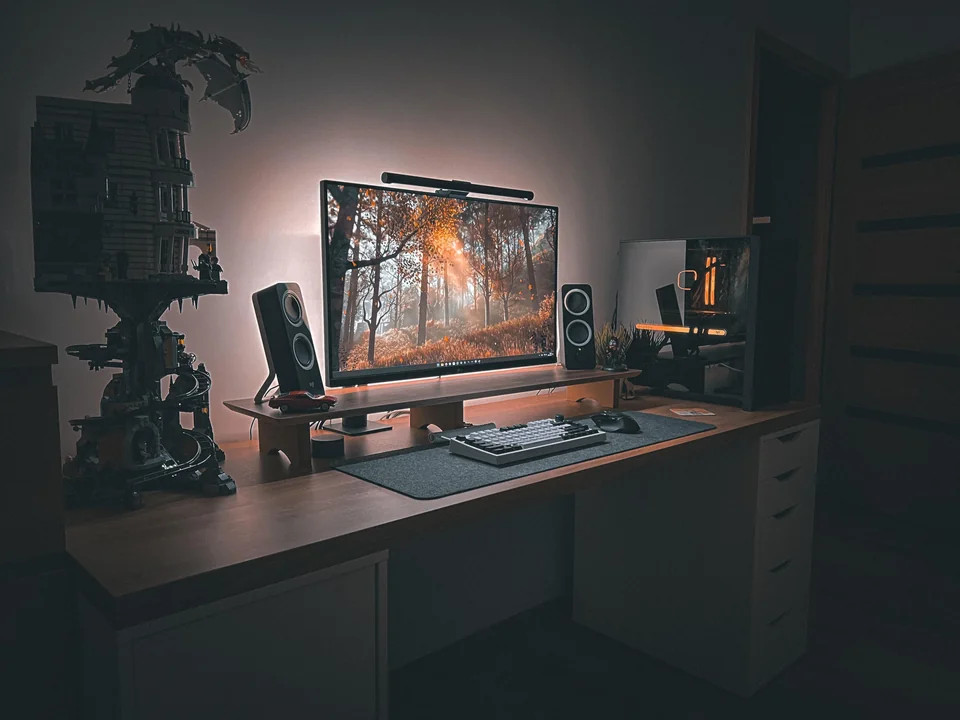Keebin’ with Kristina: the One with the Pocket Cyberdeck [Hackaday]

When you find something you love doing, you want to do it everywhere, all the time. Such is the case with [jefmer] and programming. The trouble is, there is not a single laptop or tablet out there that really deals well with direct sunlight. So, what’s a hacker to do during the day? Stay indoors and suffer?

The answer is a project like Pocket Pad. This purpose-built PDA uses a Nice! Nano and a pair of two very low-power ST7302-driven monochrome displays. They have no backlight, but they update much faster than e-paper displays. According to [jefmer], the brighter the ambient light, the more readable the displays become. What more could you want? (Besides a backlight?)
The miniature PocketType 40% is a little small for touch typing, but facilitates thumbs well. [jefmer] added those nice vinyl transfer legends and sealed them with clear nail polish.
All of the software including the keyboard scanner is written in Espruino, which is an implementation of JavaScript that targets embedded devices. Since it’s an interpreted language, [jefmer] can both write and execute programs directly on the Pocket Pad, using the bottom screen for the REPL. I’d sure like to have one of these in my pocket!
A Love Connection

One day ten years ago, Aaron Therol fell in love while taking out the trash. Someone had thrown a 1950s Royal typewriter in the Dumpster, which Therol initially mistook for an empty suitcase.
This inciting incident led to Aaron opening Typewriter Connection, a 400 square foot typewriter shop in downtown Los Angeles that rent, sells, and repairs the machines.
The store is crammed with dozens of specimens dating as far back as 1898, and visitors are invited, nay, encouraged to play with them. After all, regular use is what keeps them in clacking order.
Therol specializes in older models, from the turn of the century to the turn of the plastic in the 1960s. In addition to being a salesman, he is also the designated typewriter repair person for one Tom Hanks, who writes short stories on his collection of hundreds of typewriters. LA has a whole typewriter scene, you see, and Therol also hosts what I’m sure is one of many type-ins around town. Darn my Midwestern contentment. Maybe I should host a type-in here?
The Centerfold: A New Setup for 2024

I don’t usually go for full battlestations here, but [Gremlinalizacja]’s 2024 setup has an irresistible glow, a tiny car, and LEGO all in the same picture. The warmth comes from a Xiaomi light bar, shining down on an Epomaker TH80 keyboard and a mat from Minimal Desk Setups.
Do you rock a sweet set of peripherals on a screamin’ desk pad? Send me a picture along with your handle and all the gory details, and you could be featured here!
Historical Clackers: the Bennett Typewriter

Well, isn’t this the cutest typewriter you ever saw? About the size of a box of chocolates, the Bennett typewriter holds the honor of being the smallest keyboard typewriter ever built. I suppose that’s as opposed to an index typewriter, the prime modern example being the embossing-style label maker.
This 1910 typewriter originally sold for $18, which equates to about $567 in 2024. Other machines of this era like the Oliver No. 5 for example typically sold for $65-$125, so the Bennett was as economical as it was portable.
One of the great things about this typewriter is that the elements are cylindrical, so they can easily be swapped for other fonts. There are some interesting things to note about the key layout: space is on the top row and T and Y are on the home row, which forces G and H into the bottom row. That had to be at least a little bit confusing.
ICYMI: Calling All RSI Sufferers

[Morgan] hopes to preserve and tweak further the career-saving ergonomics of the DataHand with the Svalboard. The finger clusters are adjustable in all directions via the L-brackets, and the PLA palm rests can be thermo-formed for a custom fit.
Unlike its predecessor the lalboard which uses an ESP32, [Morgan] hand-rolled an RP2040-based controller. The really cool part of course is the switches — they are magneto-optical, using tiny magnets as springs. All the force is up front, and so it feels like no other switch out there.
If you did miss it, go check out my lengthy review of this awesome keyboard where I do my best to approximate what it’s like to type on, among other things. In a word, it’s fascinating.
Got a hot tip that has like, anything to do with keyboards? Help me out by sending in a link or two. Don’t want all the Hackaday scribes to see it? Feel free to email me directly.

![keebin’-with-kristina:-the-one-with-the-pocket-cyberdeck-[hackaday]](https://i0.wp.com/upmytech.com/wp-content/uploads/2024/03/172975-keebin-with-kristina-the-one-with-the-pocket-cyberdeck-hackaday-scaled.jpg?resize=800%2C445&ssl=1)